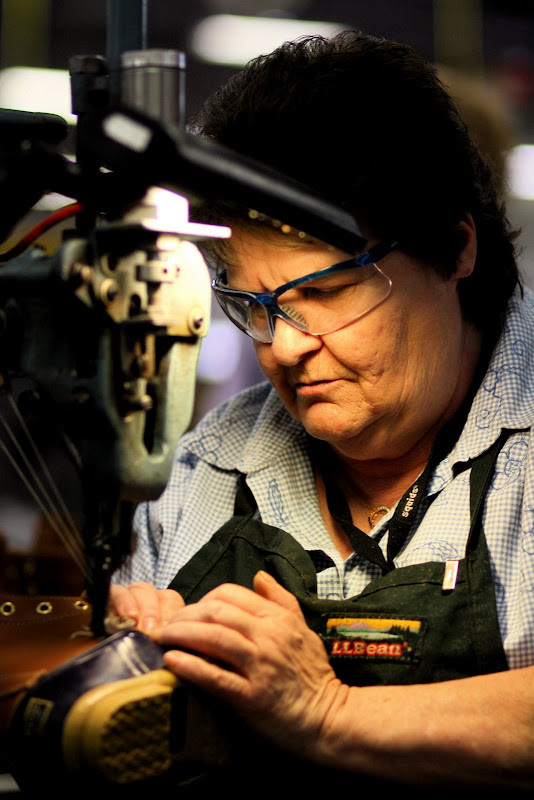
I arrived at 8 Industrial Park Way, Brunswick Maine at exactly 10:31 AM. I was already late. I frantically grabbed my two cameras, their accompanying lenses and a flash and bolted for the door, dropping my sunglasses as I gingerly pried the door open with my pinky finger and then propped it open with my foot. Three weeks ago, Max from all plaidout emailed me asking if I would be interested touring LL Bean with him and taking some photos for some stories he’s writing on American brands. I eagerly agreed, and I was told to show up at 10:30 on the morning of Friday the 13th at the Brunswick factory to meet up with a guy named Max and some PR people from LL Bean to see how Bean boots are made. Other than that, I had no idea what to expect from one of the handful of remaining shoe factories in the US.

I have always associated LL Bean with Bean boots. As a six-year-old I remember trying on my Grandfather's size 14, 8-inch boots that he used for shepherding and tromping around the living room. When I arrived at Colby in the fall of 2006, I was surprised to see kids from boarding school wearing their parents' old Bean boots the moment the sky turned gray. These Barbour clad New Englanders covet the distressed leather uppers of decades ago. Unlike a pair of Nike or Adidas, Bean boots improve with age like a pair of raw denims and I wanted to see LL Bean's legendary tradition of replacing any product at anytime in action.

This well used, fifteen-year-old Bean boot originated from Pennsylvania and needed fresh rubber and shiny new eyelets on the uppers.

First, a bandsaw cuts the rubber lowers off and automatically shoots them into a bin at the end of the work station.

These boots all received a lot of love.

The uppers are then removed from the machine and the old stitching and remaining rubber bottoms are cut out by hand.

The eyelets are then replaced one rivet at a time.
Factory workers inspecting the reworked uppper.

The boot is now ready to be matched with a rubber bottom and sewn together.

A factory worker triple stitching the leather uppers on to the rubber lowers.
Mac McKeever, the man behind LL Bean's Outdoor Discovery Schools, inspecting a shelf of finished, resurrected Boots, ready to be shipped back to their eager owners.
Check out Max's article for more photos and a more encompassing description of LL Bean, the factory, and the iconic Bean boot.
Come back tomorrow see our trip to the company headquarters where we met with folks in production and design.
Here are some more links,
LL Bean Factory (Picasa),
All Plaidout.





